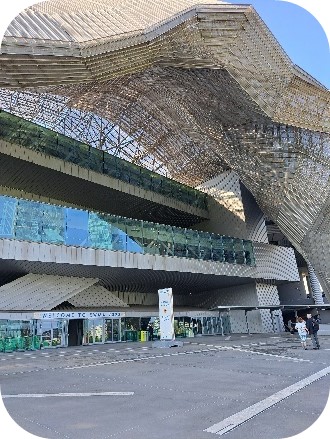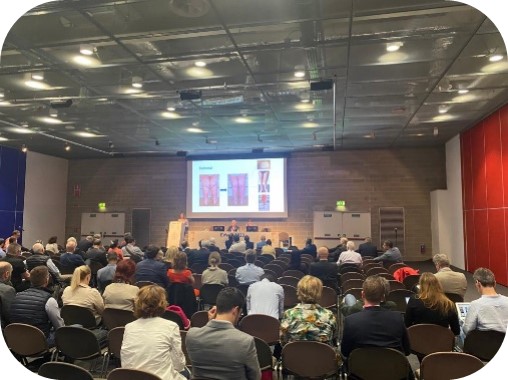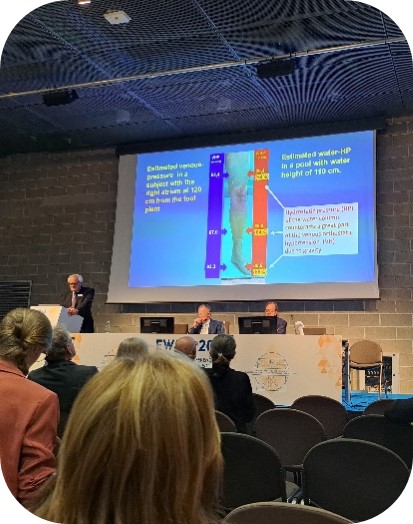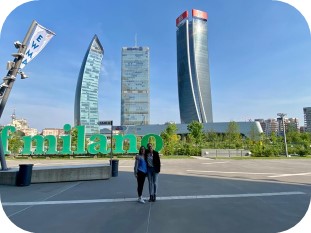In the previous blogpost about the International Compression Club meeting at the EWMA conference in Milan we already learned a lot about the new developments in compression therapy in patients with edema. For these new developments, the collaboration between clinical practice, research, engineers and industry is essential. The importance of this collaboration was pointed out by many speakers, but it requires a large investment. It is often difficult to achieve a balance between the benefits and costs of a new product for all the involved parties. In that perspective, it is sometimes also good to not forget the basics.

Therefore, we presented the protocol of our new study about the added value and cost-effectiveness of one of the basic elements in compression therapy: multilayer bandages. It is often difficult to maintain the volume reduction achieved by daily multilayer bandaging in the intensive phase. Restarting an intensive phase takes a lot of time, money and is not always feasible for the patient. Furthermore, in some continents, health care services are not easy accessible and patients live more isolated as mentioned in the presentation of dr. Da Matta. Therefore, in our study we will look at the added value and cost-effectiveness of multilayer nighttime bandaging additionally to day-time compression garments in the maintenance phase of patients with lower limb lymphedema. More information about this study can be found on our website on following link: Maintenance Lymph study.

With multilayer bandages and the compression systems discussed in the first part of the blog, the patient really feels the pressure that is been given by these systems. On the contrary, in a swimming pool a patient is not so much aware of the hydrostatic pressure that is been given by the water on the immersed body even though this hydrostatic pressure at the bottom of a pool can be quite high. Prof. Caggiati showed that the estimated hydrostatic pressure at 110cm depth would be around 80.9 mmHg. It is indicated as a ‘tension-free’ compression. He also presented that this tension-free compression has a good effect on a couple of hemodynamic parameters, like vein size, centripetal flow, reflux and calf ejection fraction. It also gives a nice volume reduction in patients with venous problems after walking 30’ in a 110cm deep swimming pool. It was also more effective than standing still in the pool for 30’ or walking for 30’ on land. Prof. Lattimer continued this topic by presenting the development of a new compression device for the treatment of recalcitrant ulcers by using the principle of this tension-free compression. It was kind of amusing to see how new devices are sometimes developed by these simple and maybe-do-not-try-this-at-home experiments performed by researchers.

Besides the development of new compression systems, it is also necessary to have reliable and valid measuring tools to evaluate the effect of these compression systems. Volume is one of the important outcomes. The new portable 3D handscan device, which aims at assessing volume in a fast and reproducible way, was presented by dr. Uhl. For this assessment, 6-18 targets need to be placed on the skin, whereafter the assessor scans the limb by walking around the subject. The volume calculation is performed by the software of the device on the computer. The mean time to scan one limb was around 90 seconds, while the calculation of the volume by the software took about 2 minutes. This device showed an accuracy of volume assessment of the lower limb of 12,5 ml. This is a promising result which, however, needs to be confirmed in a larger study.
While our brains were getting overloaded with so much new and interesting information, our stomachs were getting more empty. Time to dress up and end this fulfilling day with a lovely meal in the charming city of Milan. Cheers!


An-Kathleen